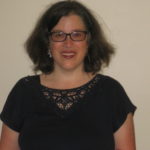“In choosing a way to mark Shmita, inspired by the Hakhel ceremony in this week’s parsha, we will be honoring our heritage and rededicating ourselves to the earth, the environment, and the Torah.”
In our parsha, Vayelech, Moses instructs the priests to gather the nation every seven years for a public reading of the Torah. The text reads as follows:
“Moses wrote down this Teaching and gave it to the priests…Moses commanded them saying: at the end of 7 years, at the time of Shmita on Sukkot – when all of Israel comes to appear before God… you shall read this Teaching aloud in the presence of all Israel.”
This commandment is called Hakhel, which means a public gathering. In Jerusalem while the Temple stood, the king would address the public with verses from the Torah. This practice was revived in modern times, with the first official ceremony taking place in Jerusalem in 1945.
The reason Sukkot was chosen, according to the Etz Hayyim Chumash, is that it was the best-attended of the pilgrimage holidays. People were able to focus on the teaching because they had already stored their harvest and felt secure about their food supplies for the coming winter.
In addition to being a nation-wide event, the mitzvah of Hakhel also holds a lesson: a reminder to each of us, immediately following the shmita year, to continue to dedicate ourselves to Torah study. A central tenet of Shmita is learning to respect the earth and our impact on it. In studying Torah through that lens, this year I hope to honor both the Torah and Shmita. I encourage all of us to find our own way to mark this Shmita year of 5782. I have decided to set the goal of honing my foraging skills to the point where I can make a meal primarily made of foraged foods. In choosing a way to mark Shmita, inspired by the Hakhel ceremony in this week’s parsha, we will be honoring our heritage and rededicating ourselves to the earth, the environment, and the Torah.
 Rabbi Miriam Midlarsky Lichtenfeld is a seasoned Jewish educator who has taught at camps, day schools, run religious schools, and educated adults. She always tries to weave environmental education into her teaching wherever she is. Rabbi Miriam was most recently the education director at the Orangetown Jewish Center in the suburbs of New York City. When she isn’t educating students or spending time with her family, she loves to hike with her dog, bike, read and garden.
Rabbi Miriam Midlarsky Lichtenfeld is a seasoned Jewish educator who has taught at camps, day schools, run religious schools, and educated adults. She always tries to weave environmental education into her teaching wherever she is. Rabbi Miriam was most recently the education director at the Orangetown Jewish Center in the suburbs of New York City. When she isn’t educating students or spending time with her family, she loves to hike with her dog, bike, read and garden.





Thank you dear Rabbi Miriam!